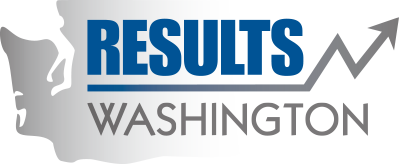Archived: Alternative Transportation Commute Methods
NO INFORMATION
A transportation system that integrates and supports travel by many different modes can work more efficiently, improve mobility and accessibility and reduce greenhouse gas emissions. Increasing the use of alternative modes of transportation improves reliability and helps to maximize capacity on the entire transportation system. Regions that successfully implement strategies which maximize system efficiency through increasing the use of carpooling, vanpooling, transit, walking and biking are able to move thousands of additional people per travel lane.
In 2015, 27.6% of Washington workers age 16 years and over used an alternative commute method (which includes carpool, vanpool, public transportation, walk, bike, taxicab, motorcycle, or work from home) to travel to work. This shows no change from the 27.6% of Washington workers using alternative commute methods in 2014, but is an increase from 27.3% in 2013.
WSDOT’s transportation strategy works to manage demand on the transportation system by striving to make transit, carpools, vanpools, teleworking, walking and bicycling convenient and accessible for all, regardless of income, age or ability. Specific strategies include:
Practical solutions: WSDOT is working with partners to create a corridor sketch database with consistent baseline information about each transportation corridor statewide.
Incorporate demand management strategies into project design and corridor planning studies: Demand management strategies include education, promotion, outreach, ridematching services, employer programs and incentives, land use and transportation coordination and user fees.
Commute Trip Reduction: This law encourages people to choose a transportation mode that reduces drive-alone trips, to work from home or adjust work schedules. Support for integrated multimodal, equitable and performance-driven transportation contributes to commute trip reduction.
Build stronger partnerships and coordination with public transportation service providers: WSDOT is working closely with cities and counties, transit agencies, planning organizations, business and other stakeholder communities to promote multimodal transportation options. This would emphasize options such as walking, biking, transit, ride share, carpools and teleworking. Providing diverse options for commuters and connecting alternative mode networks can enable capacity on the regional system to improve throughput and travel time reliability. WSDOT has completed and published the Washington State Public Transportation Plan to clarify the state's role in public transportation and provide a work plan for the next 20 years. The next step is to complete the first progress report to review the plan's goals, objectives, action strategies and success measures for WSDOT and its partners
For additional information about transportation options in Washington, see WSDOT’s quarterly accountability report, Gray Notebook 50, pp. 17-18, (click here) or at http://wsdot.wa.gov/publications/fulltext/graynotebook/Jun13.pdf#page=25.
For additional information about the Commute Trip Reduction Program, see Gray Notebook 60, pp. 22-24, at http://wsdot.wa.gov/publications/fulltext/graynotebook/Dec15.pdf#page=22.
For a multi-modal analysis of state highway system performance, see WSDOT's 2016 Corridor Capacity Report, available at http://wsdot.wa.gov/publications/fulltext/graynotebook/CCR16.pdf
WSDOT’s Public Transportation Division: http://www.wsdot.wa.gov/transit/
Commute Trip Reduction Program: http://www.wsdot.wa.gov/Transit/CTR/overview.htm
WSDOT’s commute and travel choices webpage: http://www.wsdot.wa.gov/choices
